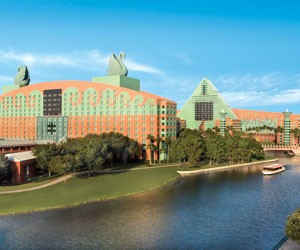Since late 2008 when the AIG debacle surfaced, the industry has taken more body blows than an NFL running back. Blunt criticisms of insurance meetings and incentives—along with the impact of a seemingly endless sluggish economy—forced the insurance meeting industry to regroup.
The uncertain times have helped elevate the importance of meeting planning, however.
“More people recognize the value of the meeting manager and the unique skill set needed to succeed in tough times,” says Kelli Livers, CMP, director of travel and administrative services at Forethought Financial Group in Houston. Livers is the Financial & Insurance Conference Planners (FICP) Chair-Elect and Treasurer.
Jennifer Squeglia, CMP, president of RLC Events in Warwick, R.I., an independent planning firm with insurance and finance clients, agrees.
“The industry’s hard times have allowed planners to show people why meetings matter, and how we can impact the bottom line,” she says.
Meeting Accountability
The media glare on insurance meetings has encouraged meeting planners to forge better relationships with suppliers, enhance practices to track spending and centralize contracting, implement more social responsibility initiatives, emphasize more educational aspects of incentive programs and become more adept at making last-minute changes.
“The pressures of a recession forced planners to think more strategically and work even smarter,” Squeglia says.
Insurance meetings and incentives are monitored more closely today. “There’s more emphasis on ROI and that benefits everybody,” says Livers.
Budget considerations are prompting longer pricing discussions, extended contract negotiations and justifying expenses at every turn.
Cautious Optimism
The gloom and doom outlook so predominant three years ago has turned to optimism as the economy continues improving, albeit slowly.
“We’re seeing signs of improvement,” says Drew Toth, director of sales and marketing for Orlando’s Grand Cypress Resort. “Our booking pace is ahead of 2011 and our golf rounds are up 10 percent.
“Our room rates jumped an average of 5 to 8 percent,” he adds.
Kathy Kozminske, vice president of sales for Associated Luxury Hotels International, who handles the insurance meetings market for the national sales entity of over 130 luxury properties, sees business picking up.
“In the past couple of years we saw more branch meetings, but now we’re seeing national insurance meetings,” Kozminske says. “Requests and bookings are going up and our properties say groups are ready to buy.”
Others are taking a more measured approach to the future, though.
“Insurance has been down over the last few years and will be through 2012 because a big component of those meetings were incentive programs,” says Eric Opron, director of sales and marketing for Orlando’s Walt Disney World Swan and Dolphin Hotel. “In recent years, fewer people are winning incentive trips and many of those kinds of meetings were eliminated or cut back dramatically.”
Some groups and properties are bullish about the future because they’ve found success during the hard times.
“We’ve been very lucky during the last few years and not felt the effects of AIG and the economic downturn,” says Stephanie Spahn, convention and meeting planner for the Independent Insurance Agents of Mississippi. “The attendance at our state meeting, which we’ve held for 26 years, is higher than ever.”
By adding enhanced networking opportunities, top-notch speakers and family activities to the meeting, attendees feel they can’t bypass the event, Spahn says. “The formula works in good times and in bad.”
The Shawnee Inn and Golf Resort in the Pocono Mountains, in Smithfield, Pa., benefitted from groups choosing to meet within driving distance, says Corporate Sales Manager Molly Moore.
“Our bookings have remained constant because we’re within less than two hours driving distance of New York City and Philadelphia,” she says.
Changing Times
Regardless whether you’re driving or flying, meeting objectives and goals still drive site selection, Livers notes.
“Incentives always will be an integral part of financial and insurance conference programs,” she says. “It’s just more likely to be a three-night/four-day program than a four-night/five-day experience.”
Luxury properties are still the main contenders for insurance meetings, but planners are finding ways to work with tighter budgets.
“Groups are reducing costs by cutting back on extravagant parties and eliminating some gifts and activities,” Livers says.
And pure recognition-based incentive program have evolved. “We’re seeing programs where companies are incorporating more business and educational aspects in their itineraries,” Toth says.
And with shorter, more intense meetings and hybrid incentives, the need for recreation options is greater than ever, says Catherine Thayer, convention sales manager at Mount Airy Casino Resort in Mount Pocono, Pa. “In exit surveys, attendees cite our casino, spa, golf course and the like as important elements of a meeting,” Thayer says.
Perception Issues
Immediately following the AIG media feeding frenzy that left the financial and insurance meetings marketplace in a disjointed state, groups concerned about perception responded with a wide array of approaches, ranging from avoiding waterfront properties and downplaying golf to selecting cheaper wines for dinner and staying close to home.
The media focus has dimmed, yet perception can still be an issue.
“It’s really dependent upon the company and its situation,” Opron says. “If the company is on shaky ground financially, then the planner might be more careful. But if the firm is healthy we’re seeing the value of face-to-face meetings getting recognized.”
Edward Schmidt Jr., a freelance writer, believes in face-to-face meetings, especially at the first tee.






